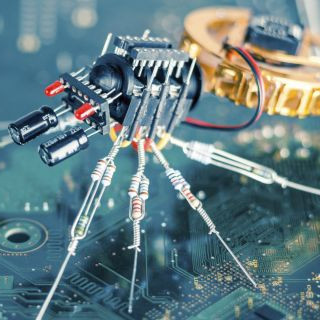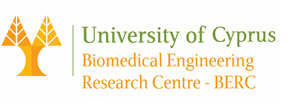Sensing, Electronics
 The delivery of individually tailored health care to a patient depends on how well that patient’s health condition can be interrogated and monitored. The biomarkers discovered through will require the dissemination of new, preferably point-of-care, tests to fully leverage the new discovery across various populations and clinical settings. Using integrated digital, analogue and MEMS (microelectromechanical systems) electronics, in combination with microfluidics, molecular activation and in vitro models, complete solutions can be devised for testing and monitoring even continuously and in real time. DNA sequencing and lab-on-a-chip approaches are already in use. Taking the technology a step further entails electroceuticals, where, rather than dispensing molecular medicine, an electrical stimulus can electrically manipulate an electrical signal that governs a function of the body through neural stimulation and/or neural inhibition. An example of an electroceutical, is the device produced by EnteroMedics, which can treat obesity by electrically manipulating signals along the nerves communicating hunger from the stomach to the brain . In order to enable the clinical application of the tools development at that IPMT CoE, novel approaches will be explored, including: implantable sensors with self-cleaning/self-calibration mechanisms, combination of fluorometer/biomarker and lab-on-chip capsule module for early stage cancer detection, chemical sensors, e.g. electronic nose, pH sensing, blood detection etc., generic implantable neural recording/stimulating device, with onboard memory, to be combined with precision medicine technology and long-term implantable power sources, and metamaterial-based miniaturized antennas for implant communications, as needed. The combination of complimentary expertise in the IPMT CoE consortium, including integrated circuit design at UCY and the microfluidic devices and in vitro testing systems at IBMT, provide the synergistic framework which can deliver the next generation integrated devices.
The delivery of individually tailored health care to a patient depends on how well that patient’s health condition can be interrogated and monitored. The biomarkers discovered through will require the dissemination of new, preferably point-of-care, tests to fully leverage the new discovery across various populations and clinical settings. Using integrated digital, analogue and MEMS (microelectromechanical systems) electronics, in combination with microfluidics, molecular activation and in vitro models, complete solutions can be devised for testing and monitoring even continuously and in real time. DNA sequencing and lab-on-a-chip approaches are already in use. Taking the technology a step further entails electroceuticals, where, rather than dispensing molecular medicine, an electrical stimulus can electrically manipulate an electrical signal that governs a function of the body through neural stimulation and/or neural inhibition. An example of an electroceutical, is the device produced by EnteroMedics, which can treat obesity by electrically manipulating signals along the nerves communicating hunger from the stomach to the brain . In order to enable the clinical application of the tools development at that IPMT CoE, novel approaches will be explored, including: implantable sensors with self-cleaning/self-calibration mechanisms, combination of fluorometer/biomarker and lab-on-chip capsule module for early stage cancer detection, chemical sensors, e.g. electronic nose, pH sensing, blood detection etc., generic implantable neural recording/stimulating device, with onboard memory, to be combined with precision medicine technology and long-term implantable power sources, and metamaterial-based miniaturized antennas for implant communications, as needed. The combination of complimentary expertise in the IPMT CoE consortium, including integrated circuit design at UCY and the microfluidic devices and in vitro testing systems at IBMT, provide the synergistic framework which can deliver the next generation integrated devices.
Precision medicine currently relies on large-scale computing clusters, to perform patient-specific data analysis and assessment, which in turn require large energy costs, and significant challenges in integration low resource communities as the costs are prohibitive. Modern embedded systems host ultra-low power processing and sensing hardware, enabling gigascale computations that are expected to reach peta-scale levels in the next decade31. With their increasing performance and decreasing costs, as well as the ability to integrate such processors in portable systems, the opportunities for precision medicine are abundant. They can offer (i) portability of high-end computational systems (such as embedded), (ii) lower costs to enable integration, adaptability and usability in underdeveloped communities, (iii) advanced data security and protection, (iv) better computation and sensing capabilities to enable for distributed and remote computation and data acquisition and processing, enabling large experiments/tests/sequence analyses to be ran locally rather than having the need to send them in a centralized platform, (v) reconfigurable hardware (FPGAs (Field Programmable Gate Arrays)) to potentially enable dynamic (on-demand) system reconfiguration, enabling the integration of multiple algorithms/applications on a single system (further reducing the costs). The IPMT CoE groups could incorporate embedded systems in their research to (i) utilize algorithm-specific optimization to further reduce the power demands of current algorithms and methodologies, (ii) use FPGAs and embedded GPGPUs (General Purpose Graphics Processing Units) in a hybrid paradigm, to facilitate high-performance, customized computation tailored to meet specific needs of emerging applications, (iii) integrate sensing and computation in emerging data acquisition platforms, for multi-use remotely deployable sensing nodes while reducing communication and computation costs – ideally sensors and computation nodes could be wearable and integral within the patient’s every day activities without any pervasive approaches, (iv) integrate hardware-supported data encryption security and privacy algorithms for protection of patient’s data.
Nano-Biotechnologies
 Precision medicine aims to combine broad data collected over time about an individual’s genetics, environment, and lifestyle, to advance disease understanding, aid drug discovery, and ensure application of appropriate therapies. In this scenario, the development of sensing technologies plays a crucial role not only limited to accomplish faster and inexpensive methods for personalized medicine. Sensor technologies show great potential for developing affordable and reliable wearable biometric devices, lab-on-a-chip and point-of-care platforms . Moreover, the implementation of these sensors in mobile devices for easily recording clinical parameters and getting remote assistance is nowadays a realistic goal. Sensor technologies hold enormous potential for understanding biological responses at an individual level by implementing them to record biological interactions and to develop drug screening platforms . In combination with advances in big data, comprehensive data from sensing systems taken from a large number of individuals are essential tools for moving fast towards one-off prevention and treatment plans.Personalized medicine benefitssignificantly from the inclusion of rich new dimensions and sources of data. However, realizing these improvements relies upon the development of novel informatics methodologies and sensing systems to advance both the science and translational applications of precision medicine. There are current projects underway to collect multi-scale molecular, sensor, clinical, environmental and behavioural data from large population cohorts to enable more comprehensive and dynamic models of individual biology and personalized health. Moreover, big efforts are being currently carried out to design sensing systems able to monitor, in the lab from easy to obtain samples or in real time from mobile applications or wearable devices, individuals.In the future, precision medicine is expected to have individuals or patients surrounded by a cloud of data varying between those directly monitoring the individual, and those quantifying the environment affecting the individual. In this context data from genome, transcriptome, proteome, metabolome, activity, phenome, interactome, environmentwill be necessary and the development of reliable, reasonably priced sensors able to record some of these data will be a key topic. “Omics” technologies point to a future in which clinical diagnoses will be rather based on the molecular , of every individual rather than on the measurement of particular biomarkers. In this context, the IPMT CoE will concentrate on sensing technologies combining convenient data acquisition with processing systems to form the base for developing efficient reading technologies of clinical, molecular and genetic signatures identified by the Centre’s groups in translational omics, bioinformatics, imaging etc. Sensor data will be streamed continuously, and data will cover a wide range of spatial locations, either through fixed sensors, or mobile sensors with varying position over time. The expertise of UCY in electronics and embedded systems, the IBMT expertise in microfluidics, ex vivo and in vitro testing, and test automation will complement the CIBER-BBN expertise in nanoscience and nanomedicine to create novel tools to enable the implementation of precision medicine.They will provide real-time, inexpensive, objective measurements of quantities which are otherwise unknown or only measured through more expensive clinical tests. All these data will be treated using big data procedures to deliver results in real time.
Precision medicine aims to combine broad data collected over time about an individual’s genetics, environment, and lifestyle, to advance disease understanding, aid drug discovery, and ensure application of appropriate therapies. In this scenario, the development of sensing technologies plays a crucial role not only limited to accomplish faster and inexpensive methods for personalized medicine. Sensor technologies show great potential for developing affordable and reliable wearable biometric devices, lab-on-a-chip and point-of-care platforms . Moreover, the implementation of these sensors in mobile devices for easily recording clinical parameters and getting remote assistance is nowadays a realistic goal. Sensor technologies hold enormous potential for understanding biological responses at an individual level by implementing them to record biological interactions and to develop drug screening platforms . In combination with advances in big data, comprehensive data from sensing systems taken from a large number of individuals are essential tools for moving fast towards one-off prevention and treatment plans.Personalized medicine benefitssignificantly from the inclusion of rich new dimensions and sources of data. However, realizing these improvements relies upon the development of novel informatics methodologies and sensing systems to advance both the science and translational applications of precision medicine. There are current projects underway to collect multi-scale molecular, sensor, clinical, environmental and behavioural data from large population cohorts to enable more comprehensive and dynamic models of individual biology and personalized health. Moreover, big efforts are being currently carried out to design sensing systems able to monitor, in the lab from easy to obtain samples or in real time from mobile applications or wearable devices, individuals.In the future, precision medicine is expected to have individuals or patients surrounded by a cloud of data varying between those directly monitoring the individual, and those quantifying the environment affecting the individual. In this context data from genome, transcriptome, proteome, metabolome, activity, phenome, interactome, environmentwill be necessary and the development of reliable, reasonably priced sensors able to record some of these data will be a key topic. “Omics” technologies point to a future in which clinical diagnoses will be rather based on the molecular , of every individual rather than on the measurement of particular biomarkers. In this context, the IPMT CoE will concentrate on sensing technologies combining convenient data acquisition with processing systems to form the base for developing efficient reading technologies of clinical, molecular and genetic signatures identified by the Centre’s groups in translational omics, bioinformatics, imaging etc. Sensor data will be streamed continuously, and data will cover a wide range of spatial locations, either through fixed sensors, or mobile sensors with varying position over time. The expertise of UCY in electronics and embedded systems, the IBMT expertise in microfluidics, ex vivo and in vitro testing, and test automation will complement the CIBER-BBN expertise in nanoscience and nanomedicine to create novel tools to enable the implementation of precision medicine.They will provide real-time, inexpensive, objective measurements of quantities which are otherwise unknown or only measured through more expensive clinical tests. All these data will be treated using big data procedures to deliver results in real time.
